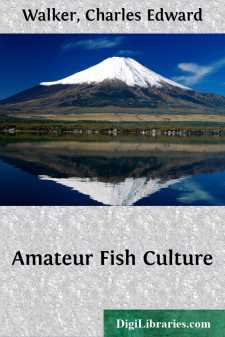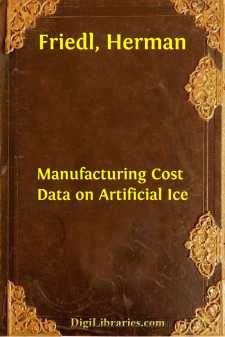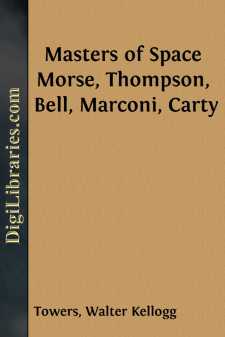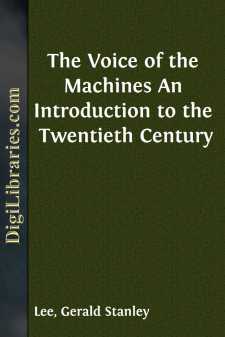Technology & Engineering
Technology & Engineering Books
Sort by:
CHAPTER I INTRODUCTORY Fish culture of a certain kind dates from very early times, but its scientific development has only come about quite recently. Most people know that in our own country the monks had stew ponds, where they kept fish, principally carp, and also that the Romans kept fish in ponds. In the latter case we hear more often of the eel than of other fish. The breeding of trout and salmon,...
more...
by:
Herman Friedl
Ice for Commercial Purposes ICE for commercial purposes is obtained in two ways: either by cutting during the winter time from our lakes and rivers and storing in large Ice Storage Houses located alongside, or by freezing pure clean water by means of artificial refrigeration. All authorities are agreed that artificial ice is more sanitary than natural ice and it is only a matter of time when the use of...
more...
Introduction The art and science of agriculture embrace most intentional human efforts to control biological activity so as to produce plants and animals of the sort wanted, when wanted. Rubber plantations, cattle ranches, vegetable gardens, dairy farms, tree farms, and a host of similar enterprises all represent human efforts to compel nature to serve man. Those who undertake agriculture have had,...
more...
INTRODUCTION Since the earliest communities of human beings first struggled for supremacy and protection, the principles of warfare have remained unchanged. New methods have been evolved and adopted with the progress of science, but no discovery, save perhaps that of gunpowder, has done so much in so short a time to revolutionize the conduct of war as aviation, the youngest, yet destined perhaps to be...
more...
I COMMUNICATION AMONG THE ANCIENTS Signaling the Fall of Troy—Marine Signaling among the Argonauts—Couriers of the Greeks, Romans, and Aztecs—Sound-signaling—Stentorophonic Tube—The Shouting Sentinels—The Clepsydra—Signal Columns—Indian Fire and Smoke Signals. It was very early in the history of the world that man began to feel the urgent need of...
more...
by:
Anonymous
HOW NEWSPAPERS ARE MADE. We will suppose that it is a great newspaper, in a great city, printing daily 25,000, or more, copies. Here it is, with wide columns, with small, compact type, with very little space wasted in head lines, eight large pages of it, something like 100,000 words printed upon it, and sold for four cents—25,000 words for a cent. It is a great institution—a power greater than a...
more...
THE MEN BEHIND THE MACHINES I MACHINES. AS SEEN FROM A MEADOW It would be difficult to find anything in the encyclopedia that would justify the claim that we are about to make, or anything in the dictionary. Even a poem—which is supposed to prove anything with a little of nothing—could hardly be found to prove it; but in this beginning hour of the twentieth century there are not a few of us—for...
more...
by:
William Saunders
DESCRIPTIVE CATALOGUE OF PLANTS. 1. Abelmoschus moschatus.—This plant is a native of Bengal. Its seeds were formerly mixed with hair powder, and are still used to perfume pomatum. The Arabs mix them with their coffee berries. In the West Indies the bruised seeds, steeped in rum, are used, both externally and internally, as a cure for snake bites. 2. Abrus precatorius.—Wild liquorice. This twining,...
more...
The year 1913 marks the close of the first fifty years since Abraham Lincoln issued that famous edict known as the emancipation proclamation, by which physical freedom was vouchsafed to the slaves and the descendants of slaves in this country. And it would seem entirely fit and proper that those who were either directly or indirectly benefited by that proclamation should pause long enough at this...
more...
MY EXCUSE My sixtieth birthday is a thing of yesterday, and I have, therefore, more than half descended the western slope. I have no quarrel with life or with time, for both have been polite to me; and I wish to give an account of the past seven years to prove the politeness of life, and to show how time has made amends to me for the forced resignation of my professional ambitions. For twenty-five...
more...











